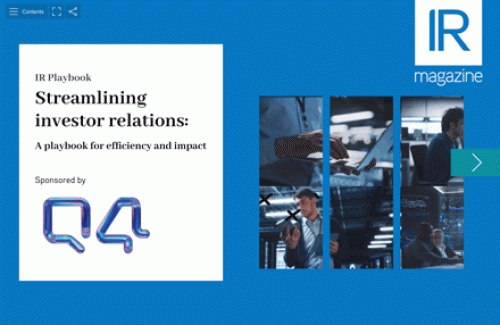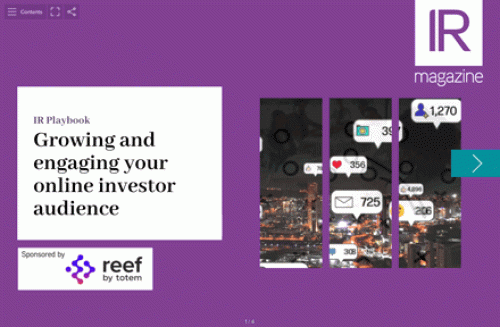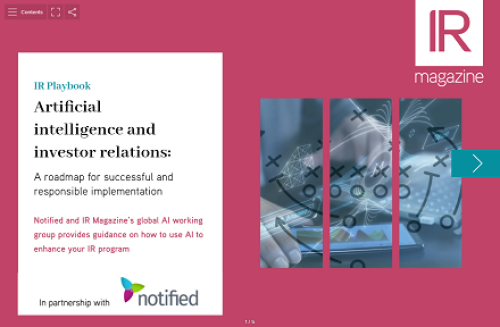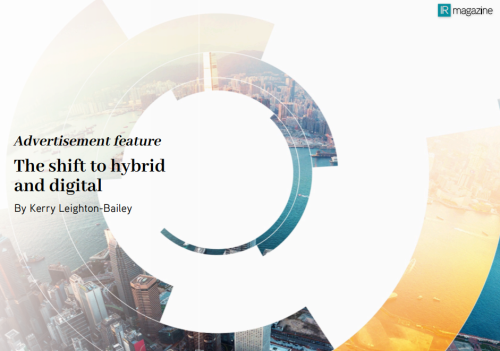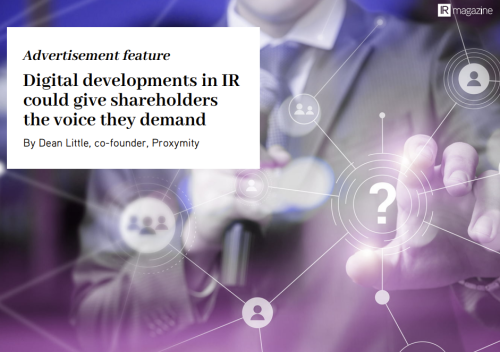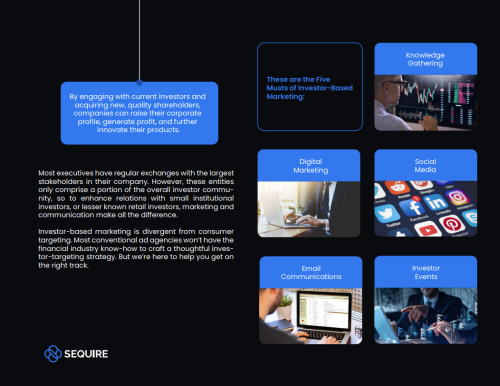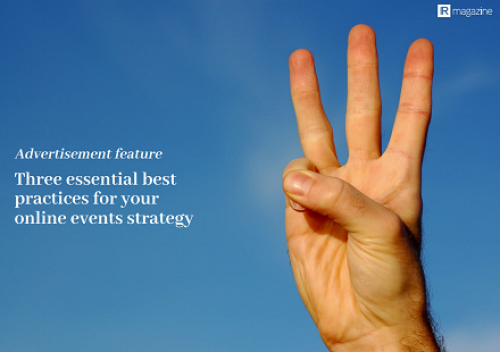Two case studies of video used for IR
Sometimes the CEO talks straight into the camera, other times slightly to the side, as though to an off-camera TV journalist. He or she may have a hard hat on, at a mine or plant. Worst-case scenario: no matter how great the company’s results, senior management members look like the bride’s parents caught in a wedding video, uncomfortably tallying the bill in their heads.
From video annual reports and shareholder letters to one-on-one interviews or video site tours, IR videos are fast proliferating. These case studies look at two models: Stanley Black & Decker, which is using videos to replace stacks of unread annual reports, and MOSAID Technologies, which is pioneering a new IR paradigm.
Stanley Black & Decker: Annual mega-hit
As described in the June issue of IR magazine, Stanley Black & Decker this year made nine short videos for an online ‘annual review’ (not quite an annual report since the recent merger necessitated mailing a 10K wrap).
Kate White, director of IR, teamed up with Manhattan design company Suka and Chatham, New Jersey-based Tribe Pictures. The resulting videos, as explained in an introductory clip with CEO John Lundgren, are ‘more interactive, cost-effective and better for the environment’ than a traditional annual report.
White says any IRO considering this path has to think about ‘selling’ it to senior management. ‘Every executive holds onto something different about the printed annual report,’ she explains. ‘Our CEO, for example, saw the annual report as a great recruiting tool, so we had to remember that when working on the videos.’ The next prerequisite is ‘a serious champion in your legal department, who’s curious and flexible and has an insatiable appetite to figure out what you need to do to make it work,’ White says.
Last fall White brought Suka’s founder, Susan Karlin, and Tribe Pictures’ Vern Oakley to Stanley’s analyst day in New Britain, Connecticut, to get a feel for the story. They saw firsthand the communication styles of management and heard the concerns of analysts and investors.
In December she brought them back to pitch the idea of video as the linchpin of the annual report process to senior management. The answer came back: go for it. Their initial plan for six interviews grew to nine, including the CEO, COO, CFO and major business heads like the presidents of Stanley’s Asian and European businesses.
Oakley and his team packed up a full load of equipment, even make-up, and in January headed to Stanley’s annual management meeting in Key Biscayne, Florida to do the interviews. Oakley and Karlin, with feedback from White, had prepared lists of questions. ‘We had 80 percent of the key points prepared, and the other 20 percent was a fishing expedition to see what new and exciting things we would discover,’ Oakley recalls.
Few of the executives were shown the questions in advance. ‘When we looked at other companies’ videos, it was easy to tell when they were just reading off a script,’ White says. ‘I’m blessed with an amazing management team. Even on our earnings calls, they can speak extemporaneously.’
The videos were shot in front of a green screen so backgrounds and graphics could be added later. With a special device in front of the camera, the executives could look straight into the lens but actually see Oakley as he interviewed them. Each interview lasted up to an hour, later edited down to just minutes of screen time. The ‘talking head’ segments were cut with location video shot from Stanley facilities in New Britain, Indiana and Paris, France.
‘Everything’s a story, and the way stories are told is evolving to become much more interactive,’ Oakley concludes. ‘Video, Flash, downloads, text – that’s the kind of experience people want in 2010.’
White says the video annual review got more than 6,600 visits in the three weeks after its launch, settling down to an average 220 visits per business day.
MOSAID: Daily dose
As director of IR and corporate communications for MOSAID Technologies, a patent licensing company in Ottawa, Michael Salter might do just 15 press releases a year. He doesn’t have much to blog or tweet about so when he wanted new content for investors, especially retail investors, he settled on video. Besides, his CEO is great on camera.
Enter Salience Dynamics, an Ottawa company that was already working on a new IR concept under the brand Investor Candy. The result: MOSAID’s ‘investor channel’, http://investorchannel.mosaid.com, a website launched in January based entirely around videos of MOSAID management.
‘The key is they’re professionally shot, but they’re not ads,’ Salter says of the videos. Analysts and investors have called them ‘credible’, ‘authentic’ and ‘believable’
MOSAID committed funding for the investor channel for a minimum of two years, and Salter anticipates it will keep going. ‘We’re at the leading edge,’ he says – and not just in terms of corporate IR. For example, a major bank told him its analysts have started shooting their own videos of site visits and showing them to their broker sales force. Another bank wants to show MOSAID’s investor channel during its morning conference call with its retail sales network.
Other retail brokers have started sending the MOSAID videos to their clients. Investor Candy lets a broker create an account, send videos to clients and track who’s viewing them. The next step will be to help brokers do video introductions to the content.
Curtis Hollister, Investor Candy’s founder, says an investor channel takes about two months for the initial research: talking to key investors and brokers, creating a campaign and shooting and editing a beginning library of videos. After the launch, Investor Candy produces short videos for results or other press releases with a 24 to 48-hour turnaround.
More examples of the investor channel are on their way: at time of writing, Ottawa’s March Networks and Radient Pharmaceuticals from Los Angeles were preparing to launch their own versions. Meanwhile, Ripplefire, a marketing communications version of the investor channel, and Rainmaker, for ETFs and mutual funds, are in the works.
Hollister says the investor channel costs around $25,000 for the initial research, filming and web design, then $1,000 a month to host the content. A company may choose to do subsequent videos itself, but Investor Candy could do 20 or so a year for a total of $50,000 to $60,000.
It’s all about feeding content to the hungry web, Hollister concludes. ‘A picture is worth 1,000 words,’ he says. ‘And a video is worth 1,000 pictures.’
Nina’s picks: top 10 new video-enhanced online annual reports
AFCE* – CEO video enhanced with coordinating graphics
CenterPoint Energy – Executive videos for key stories
Chevron – Narratives support Chevron’s theme of ‘A year of achievement’
Emerson – Large-format CEO video**
GE – Two narrative videos supporting the theme ‘Renew’**
Land O’Lakes* – Videos of CEO and two business unit videos**
Maidenform Brands* – Quick-response barcode in print annual links mobile devices to an online video
Pfizer – Several narrative videos tell the stories in the lab and in people’s lives**
TD Ameritrade – Series of executive insight videos
Whirlpool Corporation – Employee testimonials on vision, brands, passion and innovation
Thanks to Nina Eisenman, Eisenman Associates, author of the ‘Online annual report’ (OAR) report.
*Eisenman Associates clients
**Special mention for high-quality production

